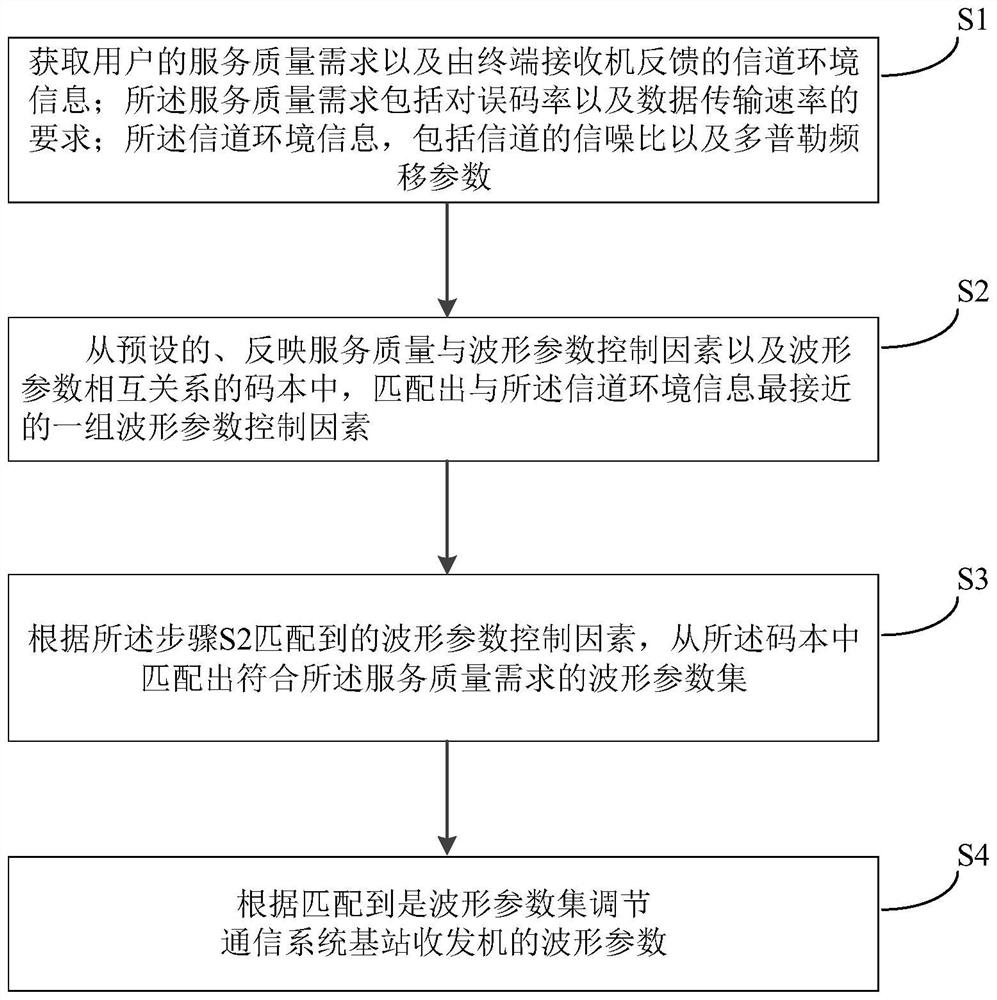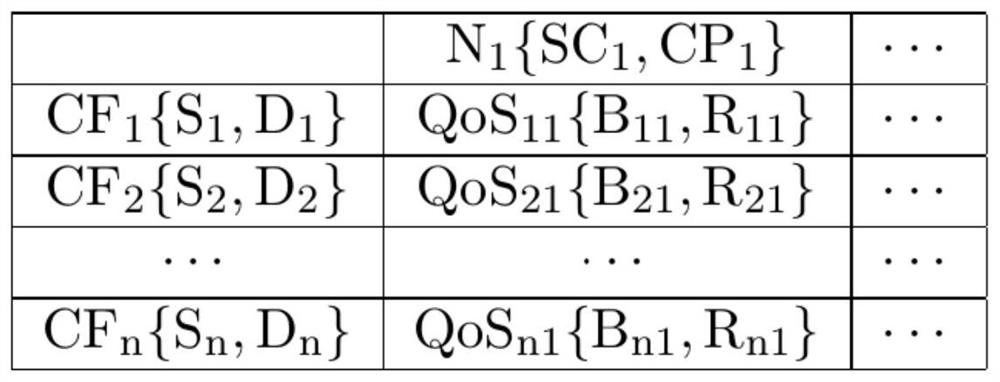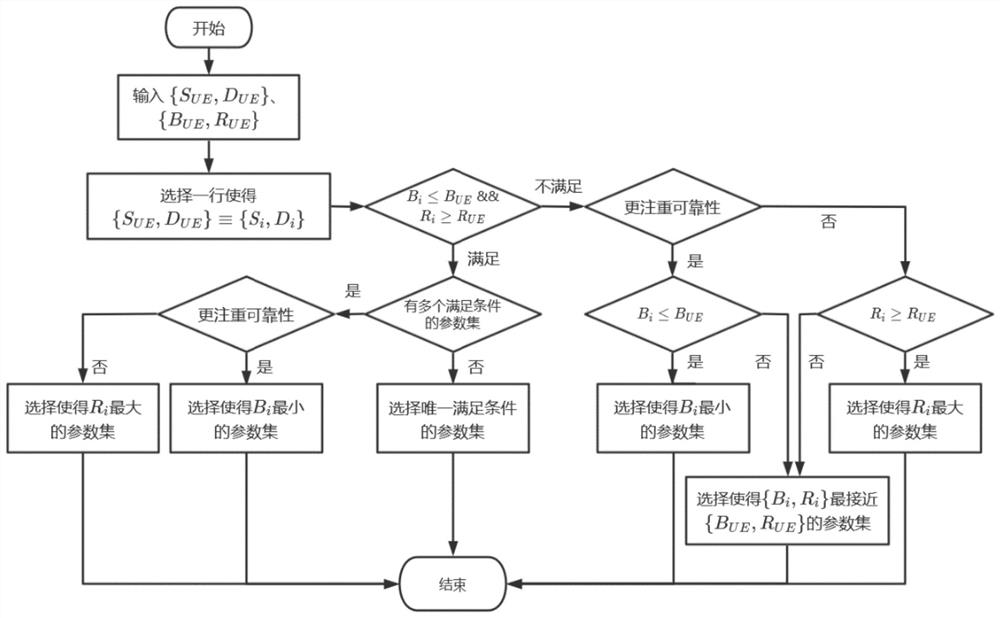Adaptive adjustment method for multi-carrier waveform parameters of communication system
A technology of self-adaptive adjustment and waveform parameters, used in transmission systems, multi-frequency code systems, digital transmission systems, etc.
- Summary
- Abstract
- Description
- Claims
- Application Information
AI Technical Summary
Problems solved by technology
Method used
Image
Examples
Embodiment 1
[0049] Please refer to figure 1 , an adaptive adjustment method for multi-carrier waveform parameters of a communication system, comprising the following steps:
[0050] S1, obtain the service quality requirement of the user and the channel environment information fed back by the terminal receiver; the service quality requirement includes requirements for bit error rate and data transmission rate; the channel environment information includes the signal-to-noise ratio of the channel and the data transmission rate. Puller frequency shift parameter;
[0051] S2, matching a set of waveform parameter control factors closest to the channel environment information from a preset codebook that reflects the relationship between quality of service and waveform parameter control factors and waveform parameters;
[0052] S3, according to the waveform parameter control factor matched in the step S2, match a waveform parameter set that meets the quality of service requirement from the codeb...
Embodiment 2
[0057] see figure 1 , an adaptive adjustment method for multi-carrier waveform parameters of a communication system, comprising the following steps:
[0058] S1, obtain the service quality requirement of the user and the channel environment information fed back by the terminal receiver; the service quality requirement includes requirements for bit error rate and data transmission rate; the channel environment information includes the signal-to-noise ratio of the channel and the data transmission rate. Puller frequency shift parameter;
[0059] S2, matching a set of waveform parameter control factors closest to the channel environment information from a preset codebook that reflects the relationship between quality of service and waveform parameter control factors and waveform parameters;
[0060] S3, according to the waveform parameter control factor matched in the step S2, match a waveform parameter set that meets the quality of service requirement from the codebook;
[006...
Embodiment 3
[0081] A communication system, comprising a terminal transceiver and a base station transceiver, the terminal transceiver and the base station transceiver realize the adjustment of the waveform parameters of the base station transceiver using the adaptive adjustment method of the multi-carrier waveform parameters of the communication system in Embodiment 1 or 2. adaptive adjustment.
[0082] As a preferred embodiment, the base transceiver station obtains the channel environment information in the following manner:
[0083] see Figure 4 , the terminal transceiver performs channel estimation on the data sent by the base station transceiver including removing CP and Fourier transform, and obtains channel environment information including the signal-to-noise ratio of the channel and the Doppler frequency shift parameter, And at the MAC layer, the channel environment information is mapped to the uplink control channel, and after coding and modulation, the operations of adding CP ...
PUM
 Login to View More
Login to View More Abstract
Description
Claims
Application Information
 Login to View More
Login to View More - R&D
- Intellectual Property
- Life Sciences
- Materials
- Tech Scout
- Unparalleled Data Quality
- Higher Quality Content
- 60% Fewer Hallucinations
Browse by: Latest US Patents, China's latest patents, Technical Efficacy Thesaurus, Application Domain, Technology Topic, Popular Technical Reports.
© 2025 PatSnap. All rights reserved.Legal|Privacy policy|Modern Slavery Act Transparency Statement|Sitemap|About US| Contact US: help@patsnap.com



